School Integration
The fight against school segregation in Oklahoma began in earnest with Ada Lois Sipuel Fisher, a graduate with honors from Langston University who dreamed of becoming a lawyer. With the backing of the National Association for the Advancement of Colored People (NAACP), Fisher applied to attend the University of Oklahoma law school in 1946. She was denied on account of her race. With the help of a young lawyer named Thurgood Marshall, they challenged segregation within higher education. Her case went all the way to the supreme court, which ruled that the state must provide education for African Americans that is equal to whites. Fisher enrolled in the University of Oklahoma law school in 1949 and graduated in 1952. The case also paved the way for other monumental court cases, most notably, Brown v. Board of Education.
After the end of World War II, attitudes in Edmond towards segregation and race slowly began to change, with Central State College taking the lead. Oklahoma was a battleground in the fight to integrate higher education. The Vista published multiple articles beginning in the 1940s, which acknowledged that separate was not equal and advocated for equal educational opportunities for African American students.
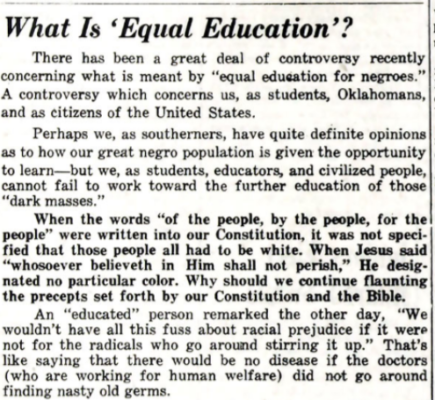
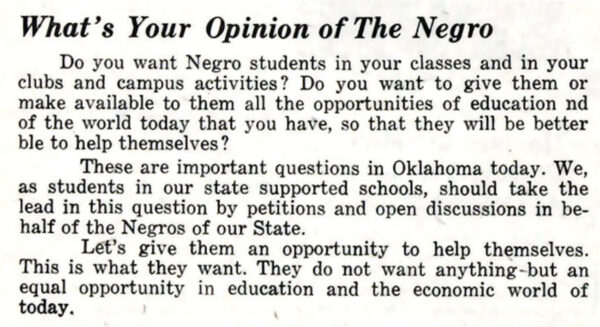
In the wake of the Brown v. Board of Education decision overturning the constitutionality of school segregation, many cities delayed integrating school until forced to through local lawsuits. Despite lawsuits in the early 1960s which showed that the Oklahoma City Public Schools engaged in unconstitutional racist practices, it wasn’t until 1972 that forced busing was implemented to integrate the schools.
Early Edmond Integration and its Trailblazers
Central State College, however, optimistically embraced integration even while the city of Edmond was still advertising that its population was 100% white. In 1954, six women became the first African American students to attend Central State College. Their names were Addie Lee Jordan, Corean Armstrong, Lanita Burton, Gertrude Dulan, Mamie Ealey, and Elizabeth Hilton Threatt. All six of the women were working towards master’s degrees in teaching.
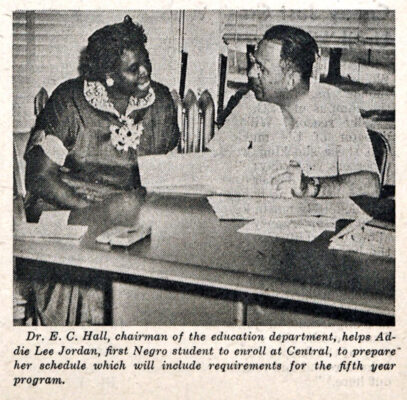
While Central State College was more open to integration than other schools in the state, Elizabeth Hilton Threatt noted racism and segregation still persisted in the school’s various clubs and organizations. In later interviews, she also recalled an instance from her first class where only one student had an issue with the classroom being integrated. She also stated that she never had any issues with the Central State College faculty at all.
Murray Samuel Butler III was one of the first African American undergraduate students to attend Central State College in 1955. In a later interview, he stated that he didn’t experience any racism there at all and that he was treated really well at Central State College. He was also popular enough to be elected as a freshman representative to the student council. The first African American student to live in the dorms was Guyvan B. Shirley from Kentucky. He, too, did not have any incidents during his time at Central State College and would often write back home about how friendly the people of Edmond were toward him.
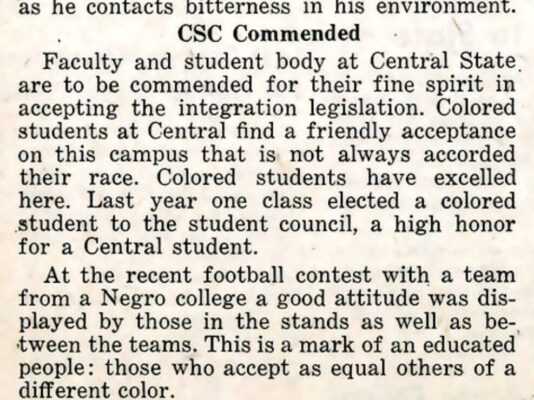
The student mentioned here is Murray Samuel Butler III.
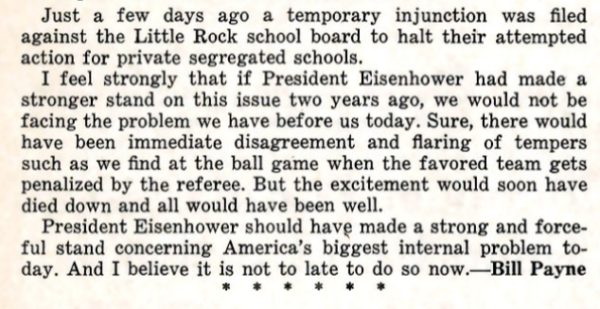
In this editorial, the author is arguing that Eisenhower should have taken a tougher stand on Little Rock, and doing so would have prevented some of the difficulties surrounding integration.
In March 1969, a former head of the National Association for the Advancement of Colored People (NAACP) spoke at Central State College highlighting the lack of African American professors and lack of African American history courses at the college. At the time, all of the professors at Central State College were white, except one African American instructor. Dr. Paul Lehman was the first African American instructor at Central State College, teaching English in 1969 while pursuing his master’s degree. After receiving his bachelor’s and master’s degrees from Central State College, Lehman earned his Ph.D. from Lehigh University but returned to Edmond in 1976, when he became the first African American professor at Central State College. According to Dr. Paul Lehman’s son, Dr. Christopher Lehman – an Edmond Memorial graduate who is now a professor at St. Cloud State University, when the family moved to Edmond in 1976, they were the only African American family living in Edmond and the first to live there in decades.
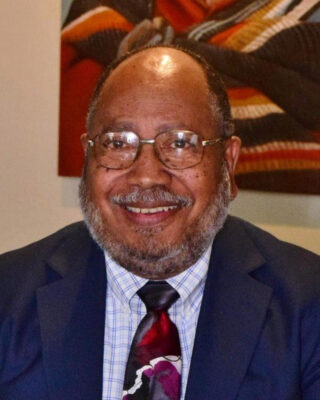
Photo Courtesy of the Oklahoma Higher Education Heritage Society Hall of Fame
Starting in the 1970s, African American families began to move back into Edmond. In 1974, Richard Turner became the first African American student to attend Edmond High School. While at EHS, Turner played both football and basketball. He would go on to play football at the University of Oklahoma and was drafted by the Green Bay Packers, playing three years in the NFL.
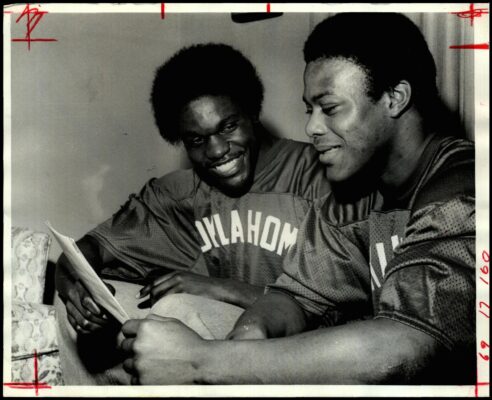
Richard Turner (Right) and Oklahoma City student Frank Moore (Left) look over their NCAA letters of intent from the University of Oklahoma.
Photo Courtesy of the Oklahoma Publishing Company Photography Collection from the Oklahoma Historical Society.
